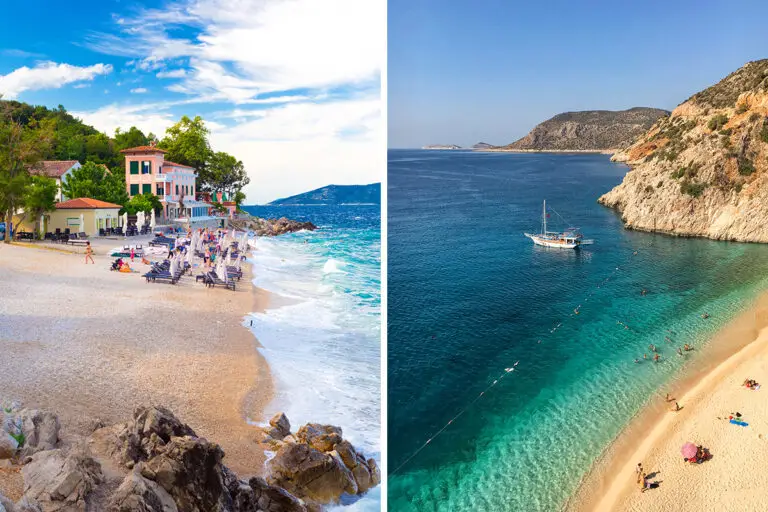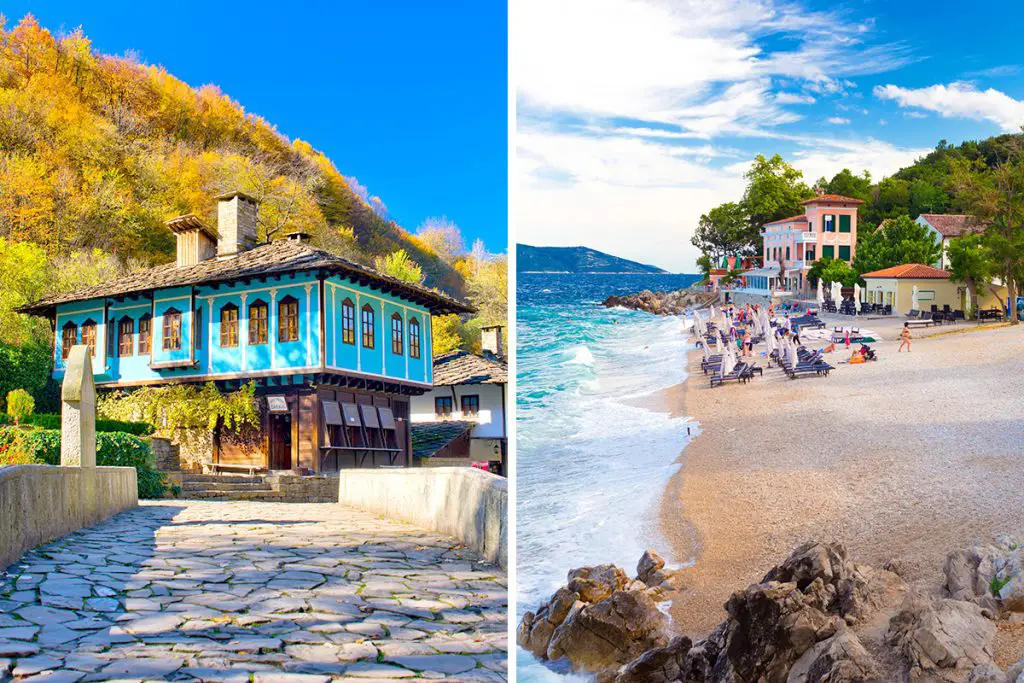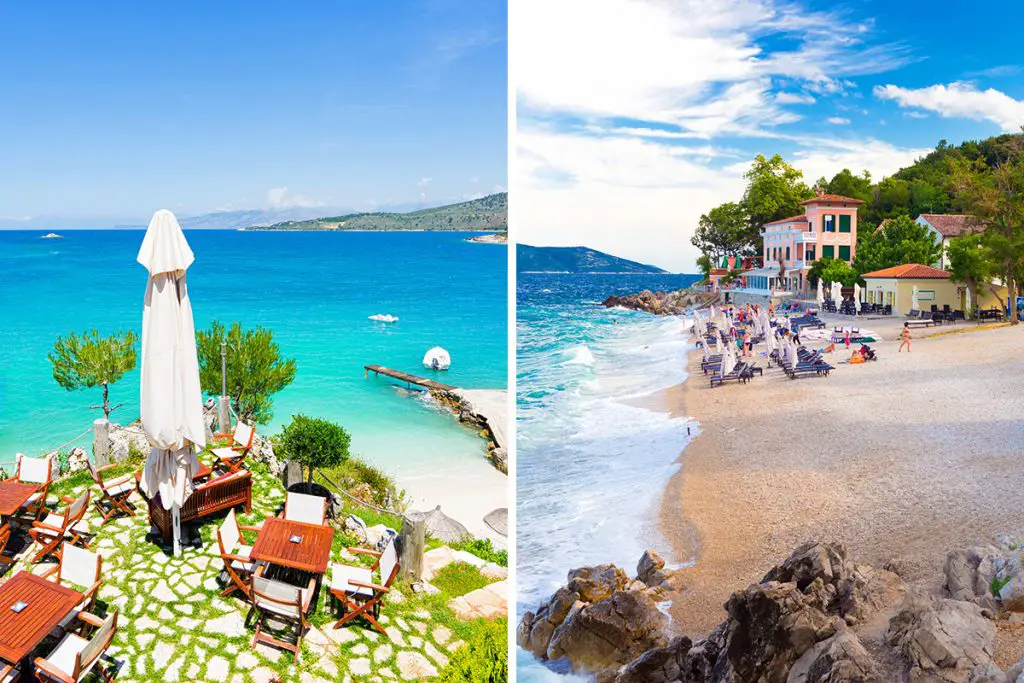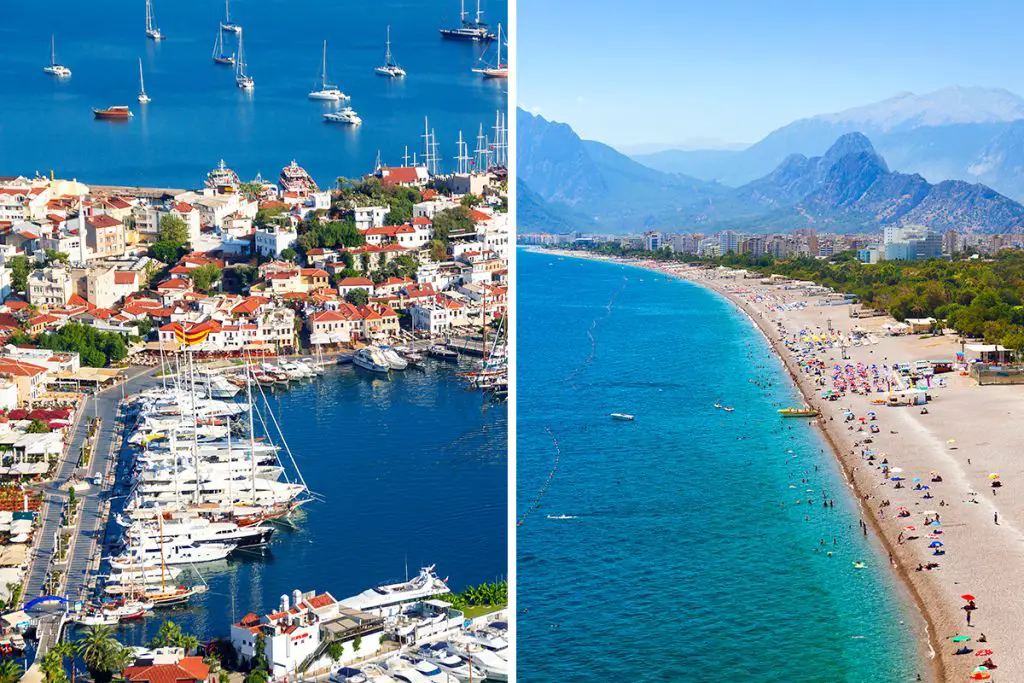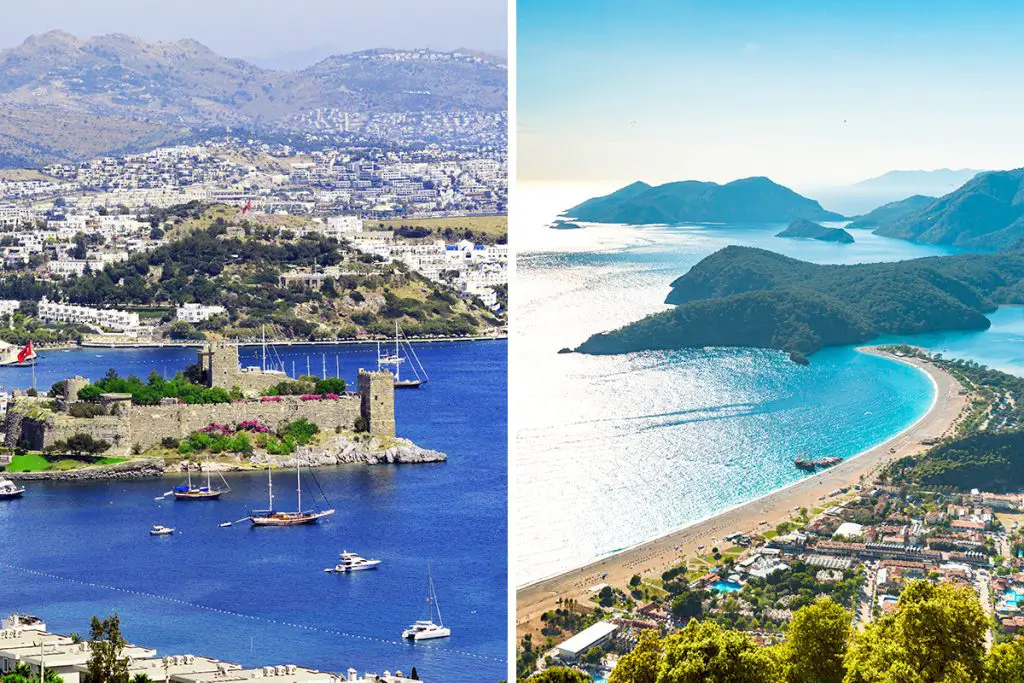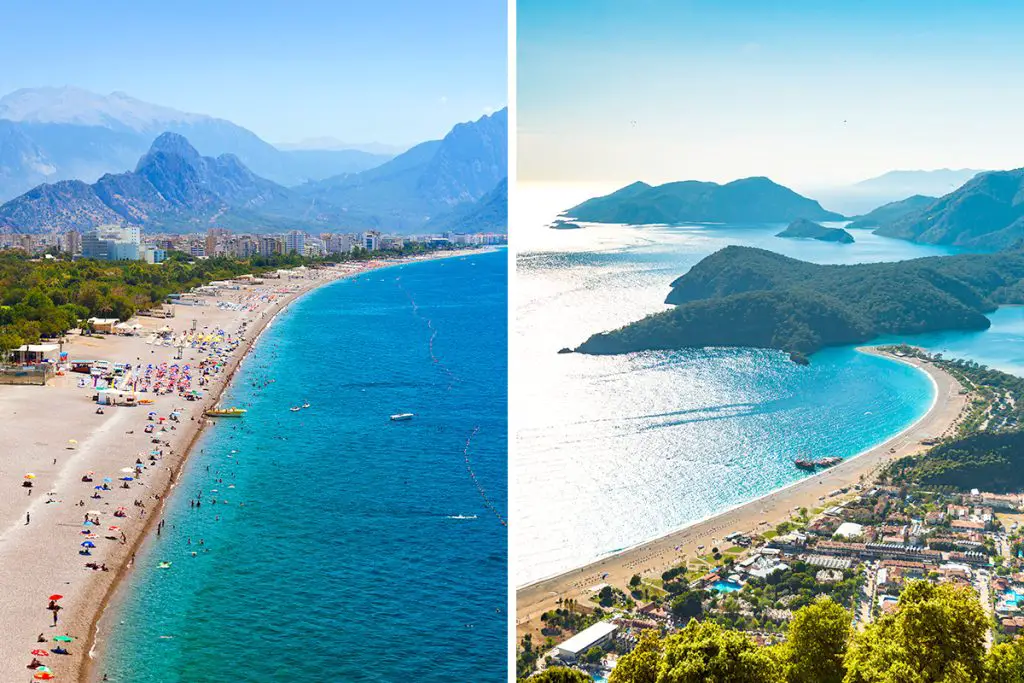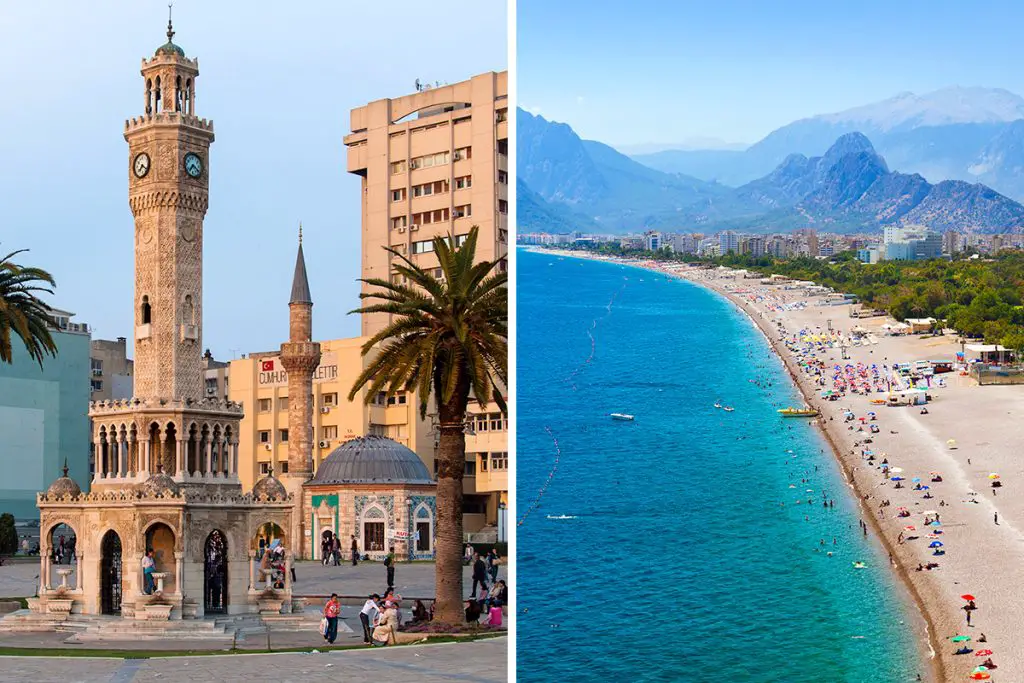Choosing between Croatia and Turkey for your next trip can be a difficult decision. Both destinations have something unique to offer, and deciding which one to visit can be a daunting task.
Whether you’re seeking beautiful beaches, rich history, delicious cuisine, or stunning natural landscapes, Croatia and Turkey have something for everyone. Keep reading to discover which destination suits your travel style!
Culture
When comparing travel destinations, one of the most important factors to consider is the cultural experience. Both Croatia and Turkey are steeped in rich history and tradition, making them popular choices for travelers seeking to immerse themselves in a new and unique culture.
Croatia is a country with a diverse cultural heritage, influenced by its location at the crossroads of Central Europe, the Mediterranean, and the Balkans. Visitors to Croatia can explore ancient Roman ruins, medieval castles, and picturesque old towns, each with their own distinct character and charm. The country is also known for its music, art, and literature, with numerous festivals and events held throughout the year.
Turkey, on the other hand, is a land where East meets West, and the cultural fusion is evident in its architecture, art, and cuisine. Visitors can marvel at stunning Ottoman mosques and palaces, explore ancient Roman ruins, and discover traditional Turkish crafts like pottery and carpet weaving. The country is also known for its famous Turkish baths, or hammams, which have been a staple of the culture for centuries.
While both destinations offer unique and fascinating cultural experiences, Croatia tends to be more influenced by Western European culture, while Turkey has stronger ties to the Middle East and Asia. Whether you prefer exploring ancient ruins or immersing yourself in modern art and music, both Croatia and Turkey have something to offer.
Attractions and Activities
One of the most critical aspects of choosing a travel destination is the variety of attractions and activities available. Both Croatia and Turkey offer a range of unique experiences that cater to different preferences and interests.
Croatia is a destination that is rich in history and natural beauty. It is famous for its stunning coastline, islands, and national parks. Some of the top attractions in Croatia include the UNESCO-listed old town of Dubrovnik, the Diocletian’s Palace in Split, and the Plitvice Lakes National Park, which features numerous waterfalls and lakes. Croatia is also home to numerous cultural and art events, including music and film festivals.
Turkey is a destination that is renowned for its cultural heritage and diverse landscapes.
Istanbul, the country’s largest city, is a melting pot of cultures and offers numerous historical sites, such as the Hagia Sophia and the Blue Mosque. Turkey is also home to several ancient cities, including Ephesus and Hierapolis, which provide a glimpse into the country’s rich history.
Natural wonders such as Cappadocia’s fairy chimneys and the Pamukkale hot springs are also popular attractions in Turkey. Besides, Turkish cuisine, with its rich flavors and spices, is another attraction for food lovers.
In terms of activities, both Croatia and Turkey offer a range of outdoor adventures.
Croatia is a popular destination for sailing and yachting, with numerous islands and secluded bays to explore. Hiking and trekking are also popular activities, with several national parks providing scenic trails. Turkey, on the other hand, is known for its hot-air balloon rides over Cappadocia, paragliding in Oludeniz, and rafting in the Koprulu Canyon National Park.
In conclusion, whether you prefer exploring ancient cities or indulging in outdoor adventures, both destinations have something to offer.
Beaches
One of the main reasons people choose to visit Croatia and Turkey is for their beautiful beaches. Both destinations offer miles of stunning coastline, crystal-clear waters, and breathtaking scenery.
Croatia boasts more than 1,000 islands, each with its own unique beaches and coves. Some of the most popular beaches in Croatia include Zlatni Rat in Bol, which features a unique shape and crystal-clear waters, and the pebble beaches of Makarska. Croatia’s beaches are known for their natural beauty, with many of them situated in secluded bays and surrounded by lush vegetation.
Turkey’s coastline is equally stunning, with miles of pristine beaches along the Aegean and Mediterranean seas. Some of the top beaches in Turkey include Oludeniz, a picturesque lagoon with turquoise waters and a long sandy beach, and Iztuzu Beach, a protected area famous for its loggerhead sea turtles. Turkey’s beaches are also known for their warm waters and soft golden sand, perfect for swimming and sunbathing.
When it comes to beach activities, both Croatia and Turkey offer a range of water sports and activities.
Croatia is a popular destination for sailing, with numerous marinas and yacht charters available. Snorkeling and scuba diving are also popular activities, with the crystal-clear waters providing an excellent opportunity to explore the underwater world. Turkey, on the other hand, is known for its windsurfing and kitesurfing, especially along the Aegean coast.
In a nutshell, both Croatia and Turkey offer stunning beaches and a range of water activities for visitors to enjoy. Whether you prefer secluded bays or long sandy beaches, you will find something to suit your preferences in both destinations.
Eating, Drinking & Nightlife
One of the most enjoyable parts of traveling is experiencing the local cuisine, drinks, and nightlife. Both Croatia and Turkey have a rich culinary heritage and offer unique and diverse dining and drinking experiences.
Croatia is a destination renowned for its fresh seafood, delicious wines, and traditional dishes. The country’s coastal areas offer an abundance of seafood, including octopus, squid, and various fish species, while the inland regions are known for their meat dishes, such as cevapi and pasticada. Croatian wines are also popular, with several regions producing high-quality wines, such as the Istria and Peljesac regions.
In terms of nightlife, Croatia’s coastal cities offer a range of bars and clubs, with Hvar and Split being two popular destinations for partygoers.
Turkey is a destination renowned for its rich flavors and spices. Turkish cuisine offers a range of dishes, including kebabs, meze, and baklava, as well as delicious teas and coffee. The country’s cities offer a range of dining options, from street food vendors to high-end restaurants, and the famous Turkish breakfast is a must-try experience.
In terms of nightlife, Istanbul offers a vibrant and lively scene, with numerous bars, clubs, and live music venues. The country’s coastal areas also offer a range of beach bars and clubs, with Bodrum being a popular destination for partygoers.
Both Croatia and Turkey offer a range of drinking experiences, from local wines and beers to traditional spirits such as rakija and raki. Croatia’s coastal areas are known for their wine production, while Turkey’s raki is a popular drink for locals and visitors alike. In terms of coffee, both destinations offer unique and delicious experiences, with Croatia’s kava and Turkey’s Turkish coffee being must-try experiences.
Both Croatia and Turkey offer a range of dining, drinking, and nightlife experiences that cater to different preferences and interests. Whether you prefer traditional dishes and wines or exotic flavors and cocktails, you can find something to appreciate in both destinations.
Shopping
Both Croatia and Turkey offer unique shopping experiences for visitors, with a range of local products and souvenirs to take home.
Croatia is a destination that is famous for its traditional handicrafts and souvenirs, such as pottery, lace, and wooden toys. The country’s markets and shops offer a range of products, from locally made olive oil and wine to handmade jewelry and ceramics.
Dubrovnik and Split are two popular destinations for shopping, with numerous shops and markets offering unique and locally made products.
Turkey is a destination that is famous for its bazaars and markets, offering a range of products, including textiles, ceramics, and spices. The Grand Bazaar in Istanbul is one of the world’s largest covered markets, with more than 4,000 shops offering a range of products, from carpets and kilims to jewelry and leather goods.
Turkey is also famous for its traditional Turkish carpets, which are hand-woven using unique designs and techniques.
In terms of shopping experiences, both Croatia and Turkey offer a range of options, from local markets to high-end designer stores. Turkey’s bazaars offer a unique and exotic shopping experience, with haggling and bargaining being a common practice. Croatia’s shopping experience is more laid-back, with locally made handicrafts and souvenirs being popular among visitors.
Overall, both Croatia’s and Turkey’s shopping experience caters to different preferences and interests. Whether you prefer traditional handicrafts or exotic textiles, you can find something to appreciate in both destinations.
Accommodation
Choosing the right accommodation is an essential aspect of planning your travel experience. Both Croatia and Turkey offer a range of accommodation options that cater to different budgets and preferences.
Croatia is a destination that is famous for its coastal villas and apartments, offering stunning views of the Adriatic Sea. The country’s cities also offer a range of hotels, from budget-friendly options to high-end luxury hotels. In addition, Croatia is home to numerous campsites and glamping sites, providing a unique and authentic experience for visitors who enjoy camping and outdoor activities.
Turkey is a destination that offers a range of accommodation options, from budget-friendly hotels to luxury resorts. The country’s coastal areas are famous for their all-inclusive resorts, offering a range of amenities, such as pools, spas, and beach access. Istanbul is also home to numerous hotels and apartments, providing a range of options for visitors who want to experience the city’s vibrant culture and history.
In terms of unique accommodation experiences, both Croatia and Turkey offer a range of options.
Croatia is home to numerous lighthouses that have been converted into accommodation, providing a unique and authentic experience for visitors who want to escape the crowds. Turkey, on the other hand, is home to numerous cave hotels, such as those in Cappadocia, providing a unique and memorable experience for visitors who want to stay in a one-of-a-kind setting.
All in all, whether you prefer coastal villas or all-inclusive resorts, you can find something to suit your preferences in both destinations.
Family-Friendliness & Children’s Activities
Traveling with children requires careful planning and consideration of activities that cater to their interests and needs. Both Croatia and Turkey offer a range of family-friendly activities and attractions that provide a memorable experience for the whole family.
Croatia is a destination that is renowned for its natural beauty and outdoor activities, making it an excellent destination for families who enjoy outdoor adventures. The country’s national parks, such as Plitvice Lakes and Krka, offer scenic hiking trails and picturesque waterfalls that are sure to amaze children and adults alike.
Croatia’s coastline also offers a range of activities, from swimming and snorkeling to kayaking and sailing. In addition, Croatia is home to numerous family-friendly festivals and events, such as the International Children’s Festival in Sibenik, providing a range of cultural and artistic activities for children to enjoy.
Turkey is a destination that offers a range of family-friendly activities and attractions, from beach resorts to water parks and amusement parks. The country’s coastal areas, such as Antalya and Bodrum, offer a range of all-inclusive resorts that cater to families with children, providing a range of amenities and activities, such as kids’ clubs and entertainment programs.
Turkey’s cities also offer a range of activities, such as museums and aquariums, providing a range of educational and cultural experiences for children.
In terms of unique experiences for children, both Croatia and Turkey offer a range of options. Croatia is home to numerous adventure parks, such as the Glavani Park, providing a range of outdoor activities, such as zip-lining and rope courses. Turkey, on the other hand, is home to numerous natural wonders, such as the Pamukkale hot springs, providing a unique and memorable experience for children.
In conclusion, both Croatia and Turkey are filled with family-friendly fun. Whether you prefer outdoor adventures or beach resorts, you can find something to suit your family’s preferences in both destinations.
Getting There & Getting Around
Getting to and around your destination is an important aspect of planning your trip. Both Croatia and Turkey offer a range of options for getting to and around their respective destinations.
Croatia is a destination that is well-connected to the rest of Europe, with numerous international airports, such as Dubrovnik, Split, and Zagreb, offering direct flights to several destinations. The country’s coastal cities also offer ferry connections to Italy, Greece, and other destinations in the Adriatic.
In addition, Croatia is home to a well-developed road network, making it easy to explore the country by car. The country’s cities also offer public transportation options, such as buses and trams, providing a convenient and affordable way to get around.
Turkey is a destination that is well-connected to the rest of the world, with Istanbul being a major international hub. The country’s other major cities, such as Ankara and Izmir, also offer international airports with direct flights to several destinations. Turkey’s coastal areas also offer ferry connections to Greece and other destinations in the Aegean and Mediterranean.
In terms of getting around, Turkey’s cities offer a range of public transportation options, such as buses, trams, and metro systems. Taxis and rental cars are also available, providing a convenient way to explore the country’s diverse landscapes and attractions.
When it comes to unique transportation experiences, both Croatia and Turkey offer a range of options. Croatia is home to numerous scenic railways, such as the Zagreb to Split route, providing breathtaking views of the country’s stunning landscapes. Turkey is home to numerous hot-air balloon rides, such as those in Cappadocia, providing a unique and memorable way to explore the region’s unique landscapes.
In short, both Croatia and Turkey have plenty of options for traveling in and around them. Whether you prefer flying, ferry rides, or road trips, you can find a convenient and affordable way to explore both destinations.
Weather
The weather can play a significant role in determining the best time to visit a destination. Both Croatia and Turkey offer a range of climates and weather patterns throughout the year, making them ideal destinations for visitors with diverse preferences.
Croatia is a destination that offers a mild Mediterranean climate, with warm summers and mild winters. The country’s coastal areas experience average temperatures of 77°F (25°C) in the summer months, with the sea temperature averaging around 75°F (24°C). In the winter months, the coastal areas experience average temperatures of 46°F (8°C).
Inland areas experience slightly colder temperatures in the winter months, with average temperatures of 32°F (0°C).
The best time to visit Croatia is during the summer months, from June to September, when the weather is warm and sunny.
Turkey is a destination that offers a varied climate, with hot summers and mild winters. The country’s coastal areas experience average temperatures of 84°F (29°C) in the summer months, with the sea temperature averaging around 77°F (25°C). In the winter months, the coastal areas experience average temperatures of 59°F (15°C).
Inland areas experience colder temperatures in the winter months, with average temperatures of 41°F (5°C).
The best time to visit Turkey is during the shoulder seasons, from April to May and from September to October, when the weather is mild and the crowds are smaller.
In summary, both Croatia and Turkey offer a range of weather patterns that cater to different preferences. Whether you prefer warm and sunny summers or mild and comfortable winters, you can find something to suit your preferences in both destinations.
Safety
Ensuring your safety is a crucial aspect of travel planning. Both Croatia and Turkey are generally considered safe destinations for visitors, with low crime rates and friendly locals.
Croatia is a destination that is considered safe for visitors, with a low crime rate and a welcoming local population. The country’s roads are generally safe, but caution is advised when driving on narrow and winding roads.
Croatia is also home to numerous national parks and natural attractions, so it’s important to be aware of the potential risks associated with outdoor activities, such as hiking and swimming.
Turkey is a destination that is also considered safe for visitors, with a low crime rate and friendly locals. The country’s roads are generally safe, but caution is advised when driving on narrow and winding roads.
Turkey is also home to numerous historical and cultural attractions, so it’s important to be aware of the potential risks associated with crowds and large gatherings.
Croatia and Turkey are generally considered safe destinations for visitors. However, it’s important to take precautions and be aware of your surroundings, particularly in tourist areas where petty theft can occur. Overall, visitors to both destinations can enjoy a safe and memorable travel experience.
Cost
When planning a trip, the cost is an essential factor to consider. Both Croatia and Turkey offer a range of affordable and expensive options, depending on your budget and preferences.
Croatia is a destination that offers a range of accommodation options, from budget-friendly hostels to high-end luxury hotels. Prices for budget-friendly accommodations start at around HRK 120 (USD 18) per night, while high-end hotels can cost upwards of HRK 1000 (USD 150) per night.
Food and drink prices in Croatia are generally affordable, with a typical meal at a local restaurant costing around HRK 80-100 (USD 12-15) per person. Entrance fees to museums and other attractions range from HRK 40-100 (USD 6-15) per person.
Turkey is a destination that offers a range of affordable accommodations, from budget-friendly hotels to all-inclusive resorts. Prices for budget-friendly accommodations start at around TRY 100 (USD 11) per night, while high-end hotels can cost upwards of TRY 1000 (USD 110) per night.
Food and drink prices in Turkey are also generally affordable, with a typical meal at a local restaurant costing around TRY 30-50 (USD 3-5) per person. Entrance fees to museums and other attractions range from TRY 20-50 (USD 2-5) per person.
Basically, both Croatia and Turkey have affordable and expensive options for visitors. While Croatia can be slightly more expensive in terms of accommodation and entrance fees, food and drink prices are generally affordable. Turkey offers a range of budget-friendly accommodations and attractions, making it an excellent destination for visitors on a tighter budget.
Which Is Better – Croatia or Turkey?
Choosing between Croatia and Turkey as your travel destination can be challenging, as both destinations offer a range of attractions, activities, and unique experiences. Based on the information provided in the previous chapters, we can summarize the pros and cons of each destination to help you make an informed decision.
When it comes to culture, both Croatia and Turkey offer a rich history and diverse cultural experiences. Croatia is home to numerous UNESCO World Heritage Sites, while Turkey offers a unique blend of European and Middle Eastern cultures.
In terms of attractions and activities, Croatia is renowned for its stunning natural beauty and picturesque coastal towns, while Turkey offers a range of historical and cultural attractions, such as Istanbul’s Grand Bazaar and the ancient ruins of Ephesus.
When it comes to the beaches, Croatia offers crystal-clear waters and stunning coastlines, while Turkey offers a diverse range of beach destinations, such as Antalya and Bodrum. In terms of food, drink, and nightlife, both destinations offer a range of delicious cuisine and vibrant nightlife options.
When it comes to cost, Croatia can be slightly more expensive in terms of accommodation and entrance fees, while Turkey offers a range of budget-friendly options for visitors. When it comes to safety, both destinations are generally considered safe, with low crime rates and friendly locals.
In terms of weather, Croatia offers a mild Mediterranean climate, with warm summers and mild winters, while Turkey offers a varied climate, with hot summers and mild winters.
Ultimately, the choice between Croatia and Turkey depends on your preferences and priorities. If you’re looking for stunning natural beauty and picturesque coastal towns, Croatia is an excellent choice. If you’re interested in historical and cultural attractions, and a unique blend of European and Middle Eastern cultures, Turkey is an excellent choice. If you’re on a tight budget, Turkey offers a range of affordable options for visitors.
In conclusion, both Croatia and Turkey offer a range of unique experiences and attractions for visitors. Whatever your choice may be, both destinations offer a safe and memorable travel experience.

